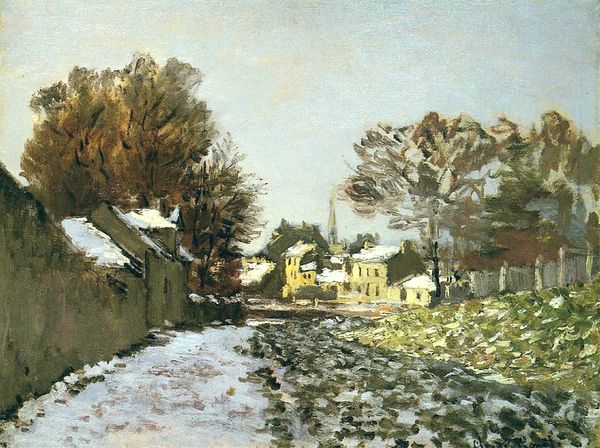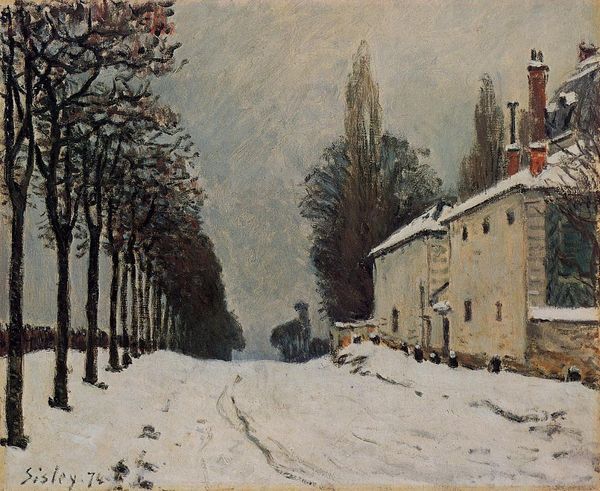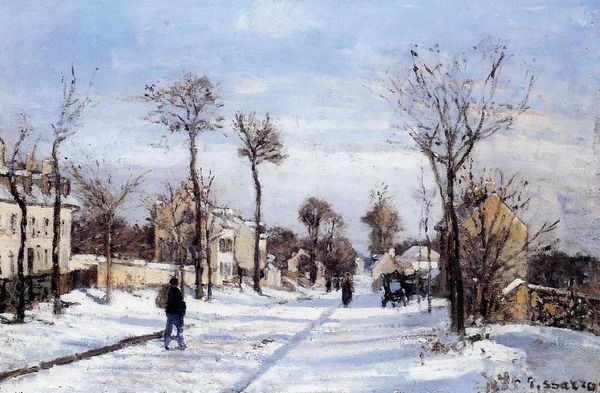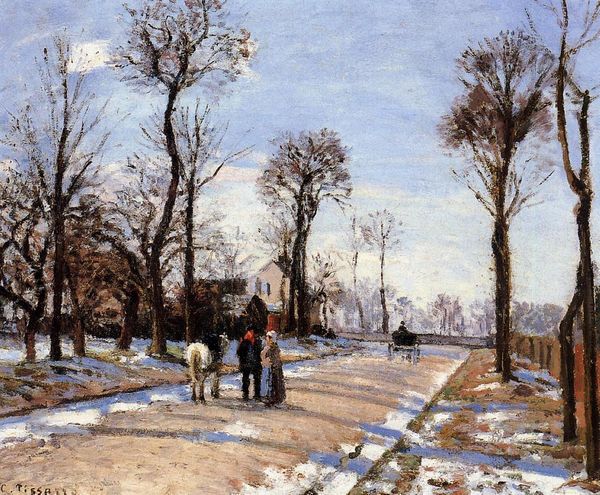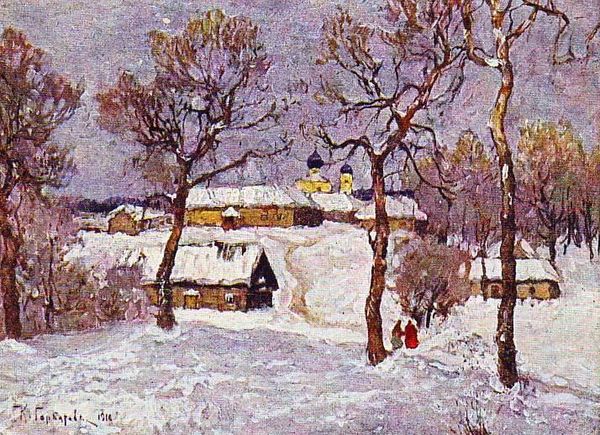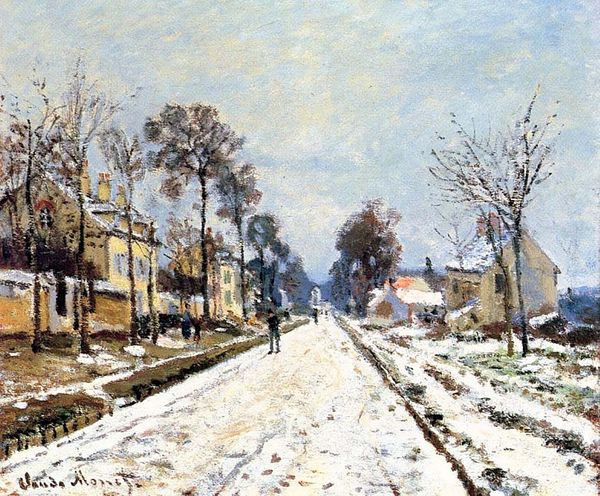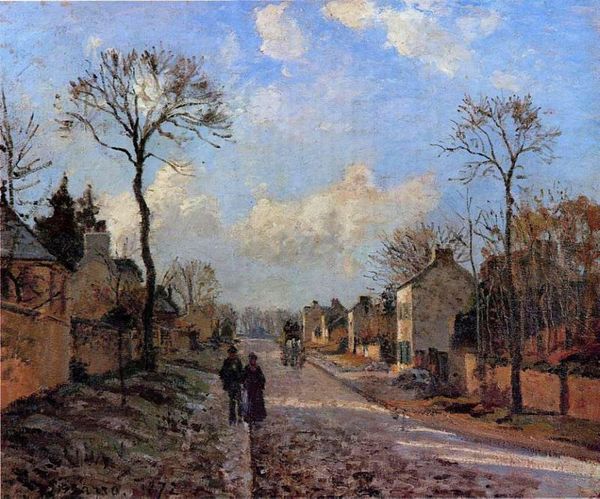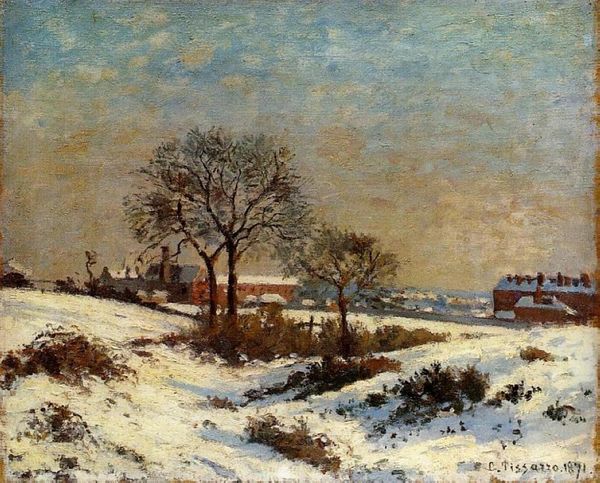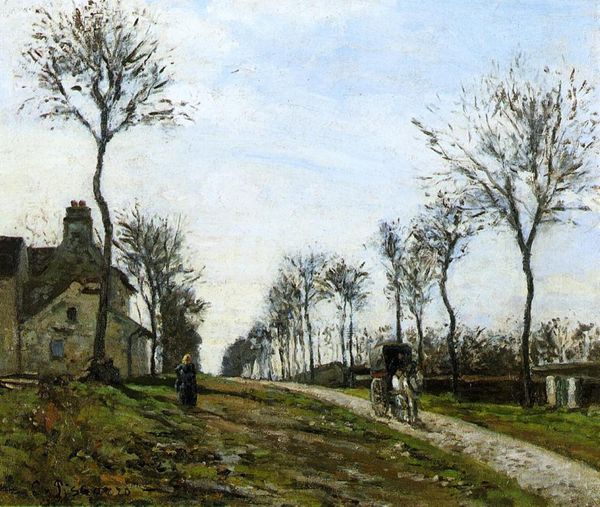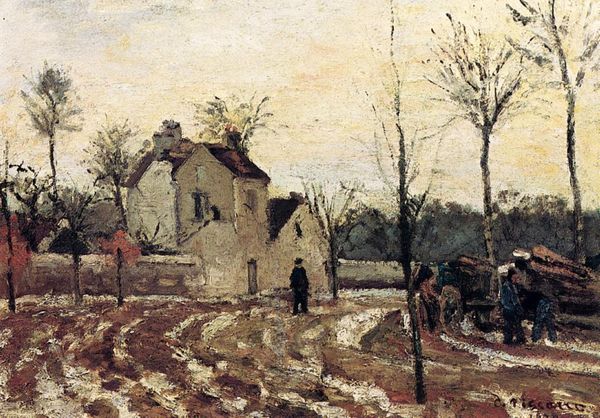
painting, plein-air, oil-paint
#
snow
#
painting
#
impressionism
#
impressionist painting style
#
plein-air
#
oil-paint
#
landscape
#
impressionist landscape
#
oil painting
#
cityscape
Dimensions: 47 x 56 cm
Copyright: Public domain
Curator: This is Alfred Sisley's "Snow at Louveciennes," an oil painting from 1874. Note how he captured a winter day en plein air. Editor: A chilly impression, wouldn’t you say? The grayed palette certainly sets a stark, wintry mood. Curator: Precisely. The composition's deliberate, organizing principle guides us from foreground to background, observing nuances of light reflecting off snow, lending depth to what could be a monotonous white expanse. Semiotically, the recurring verticality of bare trees anchors the pictorial space. Editor: And socio-politically? Winter scenes by Impressionists rarely escape critiques of idealized bourgeois leisure, contrasting with urban poverty amid industrialization. The detached figures walking almost anonymously reinforce the sense of isolation, hinting at societal alienation perhaps? Curator: Certainly, one cannot ignore potential commentaries on societal conditions. However, let’s not diminish the sophisticated brushwork itself. The individual strokes are visible, distinct, yet they coalesce to create a convincing atmospheric perspective. See the textural differences in the snow, and in the trees… Editor: Textures that simultaneously invite and repel, I think. The seemingly undisturbed snow reflects the comfortable lifestyles many Impressionists catered to through their artistic endeavors. Curator: It's difficult to separate Impressionism from this paradox: capturing fleeting moments of beauty while indirectly engaging—or disengaging—with urgent issues. It's why understanding historical context becomes so crucial. Editor: Absolutely. These paintings serve both as testaments to artistic skill, and as records, however biased, of a transformative epoch. Curator: Indeed. The dialectic interplay makes them endlessly relevant to art historical debates.
Comments
No comments
Be the first to comment and join the conversation on the ultimate creative platform.
